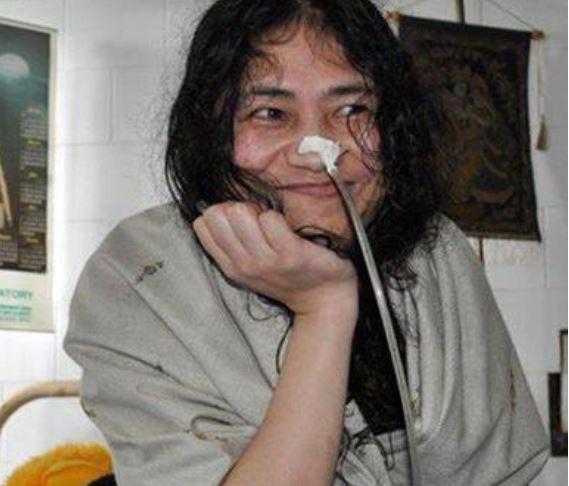
Holding on to her fasting with tenacious will power for 14 long years, 42-year-old Irom Sharmila is making headlines again for her release and re-arrest.
Sharmila, a civil rights and political activist from India, is on a hunger strike to demand that the Indian government repeal the Armed Forces Special Power Act (AFSPA) of 1958, which she believes is the root cause of violence in Manipur and other parts of Northeast India. Her activism, remarkable for its sheer longevity, has kept her at the center of heated debates surrounding military action, medical ethics and Indian law. At the center of it all, one question remains: Are her efforts worth it?
The Story Of Irom Sharmila
In 2000 in Malom, a town in the Imphal Valley of Manipur, 10 civilians were allegedly shot and killed by the Assam Rifles, a group of the Indian Paramilitary forces, while they were waiting at a bus stop. Among the victims were 62-year-old Leisangbam Ibetomi and 18-year-old Sinam Chandramani, a 1988 National Child Bravery Award winner. Sharmila, who was 28 years old at the time, began a hunger strike, cutting herself off from food and water, to protest against the killings and the AFSPA, a legal act that gave special powers to the military.
In three days, she was arrested by the police and charged with "attempt to commit suicide," which is unlawful under section 309 of the Indian Penal Code. The police forcibly fed her using nasogastric intubation. Since then, Sharmila has been re-arrested and released every year, and is generally seen in the media with her nastrogastric tube. Sharmila's steadfastness to her goal has won her several admirers who see her as a follower of Mahatma Gandhi, and in 2007, she was awarded the Gwangju prize for Human Rights.
After all these years, her fight continues.
Last week, Sharmila was released yet again from a "jail hospital," re-arrested within two days for continuing her hunger strike and forcibly taken away for medical care. Manipur Deputy Chief Minister Gaikhangam explains that the government is only trying to protect her by taking her into custody and giving her forced medical support. Sharmila is now on display by the people, the media and the government as a symbol of resistance.
In photographs, videos and television, Sharmila is seen as a frail shy woman, looking much older than her 42 years, smiling with simple determination. And honestly, it can be hard not to question why she is doing this. What is the point when the government is always stronger than she is? Is she India's Aung San Suu Ki, fighting a noble fight? Or is she letting her life go to waste with a hunger strike no one cares about?
For so many of us, expressing a protest by fasting may seem feasible for one day or perhaps even one week. But Irom Sharmila has so far crossed 14 long years of hunger striking, with no end in sight. The government is unyielding and cites the nation's security for its inaction. Activists support her by glorifying her hunger strike—though it's notable that there are no masses joining her efforts. Meanwhile, medical professionals explain that they are following medical ethics by force-feeding her.
Among all the entities involved, one characteristic remains consistent: rigidity. One wonders if this tragic situation can ever cease, unless rigidity breaks to accommodate compassion.







